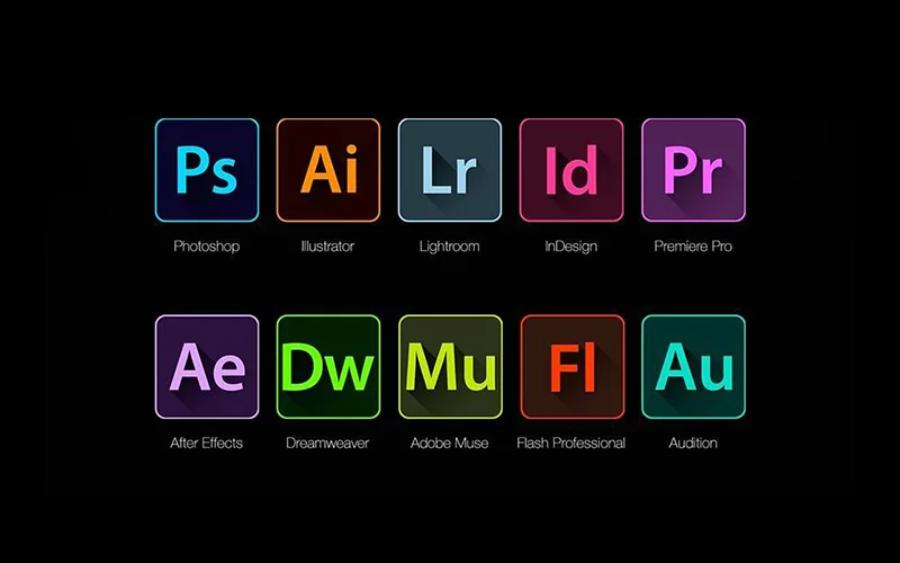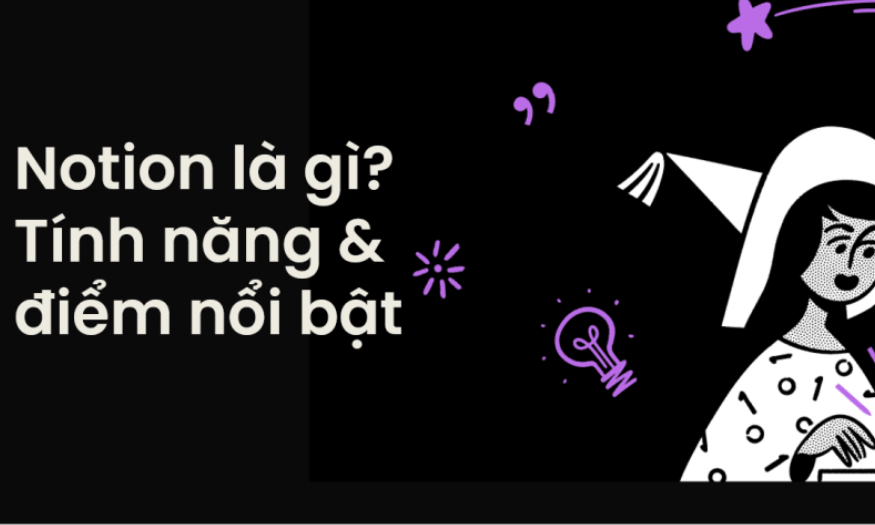Best Selling Products
Discover the Deep Meaning Behind Unique Logo Designs
Nội dung
- 1. Why is a Logo Important?
- 2. The Secret Behind Logo Design Elements
- 2.1. Color: Reflects Brand Personality
- 2.2. Shape: Structure and Meaning
- 2.3. White Space: Simplify the Message
- 3. Famous Logos and the Secrets Behind Them
- 3.1. Apple: Sophisticated and Simple
- 3.2. Nike: Drive and Energy
- 3.3. Coca-Cola: Tradition and Trust
- 3.4. McDonald's: Smiles and Welcomes
- 4. Conclusion
A logo is more than just a simple image, it is an important element that reflects the values and personality of a brand. Discover the secrets behind famous logo designs, from the meaning of colors to the hidden messages.

A logo is not just a symbol, but the “face” of a brand. When looking at a logo, customers not only recognize the brand name but also feel the message, values and philosophy that the business wants to convey. Under the simple shell, each logo contains unique design secrets, from color to shape, from lines to empty space. In this article, sadesign will explore with you the secrets behind famous logos and why they become powerful symbols in the hearts of consumers.
1. Why is a Logo Important?
A logo is the first element that customers recognize when they come into contact with a brand. It helps build an image and differentiate itself from competitors. Every detail in a logo has a clear purpose, to create a strong and lasting impression in the minds of customers. A logo is not only an identification element, but also a means for a business to express its personality and core values.
.jpg)
A successful logo is easily recognized and remembered. It can tell a story, convey a message in a subtle way without needing explanation. Therefore, logo design is not only a creative process but also a thorough research of the market, customers and cultural factors.
This is not only a symbol representing the business but also an element that helps convey the message, core values and identity of the brand visually. A professionally designed logo has the ability to create strong recognition, increase credibility and affirm the position of the business in the market. Moreover, the logo is also a bridge that helps the brand connect with customers, creating a long-lasting memory in their minds. Therefore, investing in logo design is not only a strategic decision but also an important foundation for the sustainable development of any business.
2. The Secret Behind Logo Design Elements
Every logo is built with a clear structure and strategy. Designers use basic elements like color, shape, font, and space to convey a message to the viewer. Here are some secrets behind common design elements in logos.
2.1. Color: Reflects Brand Personality
Colors play a very important role in logo design. Each color has its own meaning, which can influence the emotions and attitudes of the viewer. Here are some common colors in logos and their meanings:
Red: Represents energy, strength and passion. Often used in logos of strong, dynamic brands such as Coca-Cola, McDonald's.
Blue: Evokes feelings of trust, stability and professionalism. Financial and technology brands like IBM and Facebook often use blue.
Yellow: Creates a sense of joy, optimism and creativity. It is often used in brands that aim for freshness and fun, such as McDonald's (with a yellow background).
Green: Represents nature, life, and growth. Brands like Starbucks and Whole Foods use green to convey messages of freshness and health.
Black: Gives a sense of luxury, strength and mystery. Logos of high-end brands like Chanel and Nike often use black to create a sense of class.
2.2. Shape: Structure and Meaning
.jpg)
Shapes in logo design can convey profound meanings. For example, straight lines and squares are often associated with stability and strength, while circles convey softness, connection, and protection. These shapes not only add beauty to a logo, but can also influence how customers perceive a brand.
Square or Rectangle: Represents stability, reliability and professionalism. This is why financial, banking or insurance brands often choose this shape.
Circles: Evoke feelings of connection, wholeness, and protection. Famous logos like Pepsi and BMW use circles to create a sense of harmony.
Triangles: Often associated with strength and direction. Some logos like Adidas or Mitsubishi use triangles to create movement and dynamism.
2.3. White Space: Simplify the Message
White space in a logo is not “meaningless” but a very important design element. White space helps keep the logo clean, simple, and not too busy. It helps create balance and allows important details to stand out. Many famous logos use white space to create visual impact, such as the FedEx logo with the arrow hidden in the space between the “E” and “X”.
(1).jpg)
The proper use of white space not only makes the logo neat and elegant, but also helps viewers easily recognize and remember the brand. This is an essential element to simplify the message, avoid confusion, and create a professional and modern feel. An effective logo design does not necessarily have to be complicated, but sometimes the simplicity of white space is the key to conveying brand values clearly and deeply.
3. Famous Logos and the Secrets Behind Them
Famous logos are not just symbols representing the brand but also contain stories, meanings and subtle design strategies behind. Every detail, from color, shape to typography, is built to convey the core values, identity and vision of the business.
3.1. Apple: Sophisticated and Simple
The Apple logo is one of the most famous and recognizable symbols in the world. With the image of a bitten apple, Apple conveys the message of creativity, innovation and the constant search for new things. The "bite" in the logo also symbolizes ambition and the desire to explore. The minimalist color of the Apple logo also shows elegance and sophistication.
One of the most popular theories is that the logo was inspired by the story of Isaac Newton and his discovery of gravity, symbolizing the discovery of knowledge. However, designer Rob Janoff, who created the logo, once shared that the bite in the apple was added to avoid confusion with the shape of a cherry. While the actual meaning may vary depending on how you look at it, the Apple logo has always been seen as a symbol of innovation and foresight in the field of technology.
3.2. Nike: Drive and Energy
Nike’s famous “Swoosh” logo is one of the simplest yet most powerful designs. Inspired by the wings of the Greek goddess Nike, the logo represents movement, speed and power. With just a simple curve, Nike has created a sports symbol that is full of energy, motivation and the desire to win.
Designed in 1971 by Carolyn Davidson, the Nike “Swoosh” symbol represents movement, speed, and energy – the core elements of the brand’s philosophy and mission. With its soft, curved shape, the logo evokes the wings of the Greek goddess of victory, Nike, and conveys a message of determination and relentless motivation. The success of this logo lies not only in its design but also in its ability to inspire and connect with customers around the world.
3.3. Coca-Cola: Tradition and Trust
The Coca-Cola logo is one of the oldest and most recognizable logos in the world. With its classic font and signature red color, the Coca-Cola logo conveys a message of tradition, trust, and happiness. The red color of the logo not only evokes a sense of dynamism but also stimulates appetite, which is appropriate for a soft drink brand.
The Coca-Cola logo with its classic handwritten style not only brings a friendly, close feeling but also reminds us of the long history and sustainability of the brand. These seemingly simple details have actually been meticulously designed to convey the message and core values of the world's leading brands.
3.4. McDonald's: Smiles and Welcomes
The McDonald's logo with two golden arches forming an "M" is not just a symbol, but also a sign of friendliness and welcome. The yellow color creates a happy, optimistic feeling, while the "M" shape represents a big smile, creating closeness and approachability.
.jpg)
Designed in the 1960s, the two golden arches in the shape of the letter "M" not only represent the first letter of the brand name but are also seen as a symbol of warmth and welcome. The vibrant yellow color combined with the red background creates a sense of dynamism, stimulating the taste buds and appetite, an important factor in the fast food industry. The logo has become a global icon, representing the convenience, quality and familiar experience that McDonald's brings to millions of customers around the world.
4. Conclusion
Every logo has a story, a message, and a clear design strategy. Behind every image, color, and line are careful decisions from the designers, to convey the core values of the brand to consumers. Understanding these secrets will not only help you appreciate the importance of a logo, but can also be applied to your design work, helping to create powerful symbols and leave a lasting impression on the viewer's mind.












































